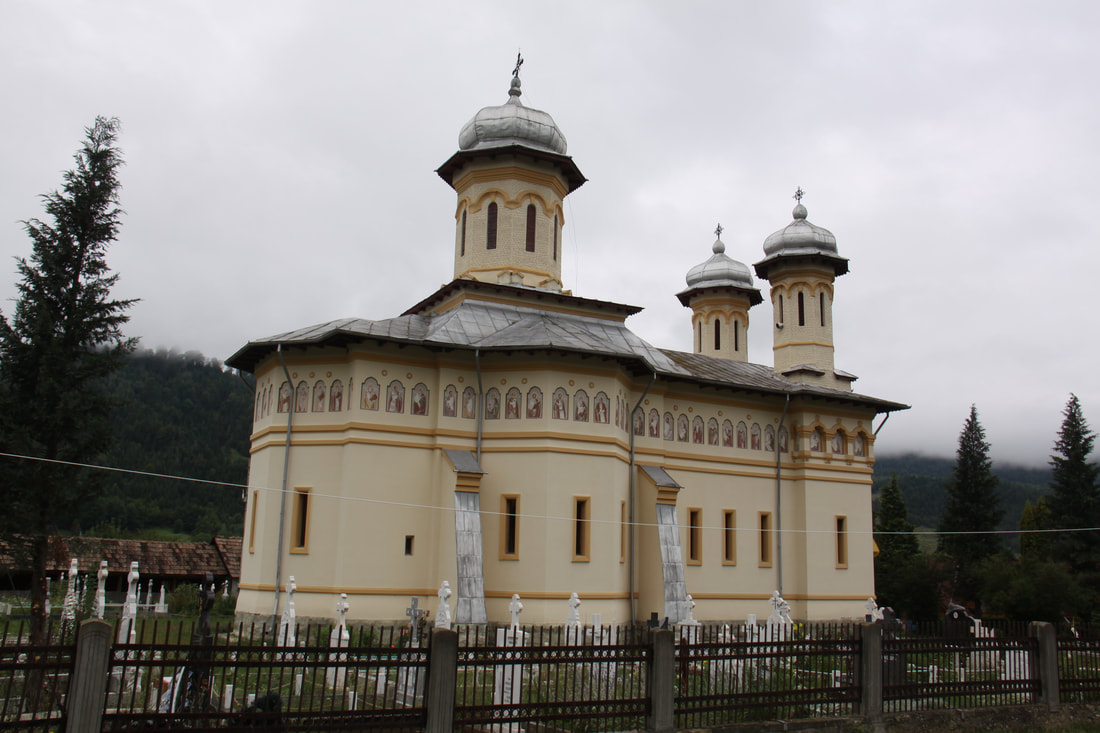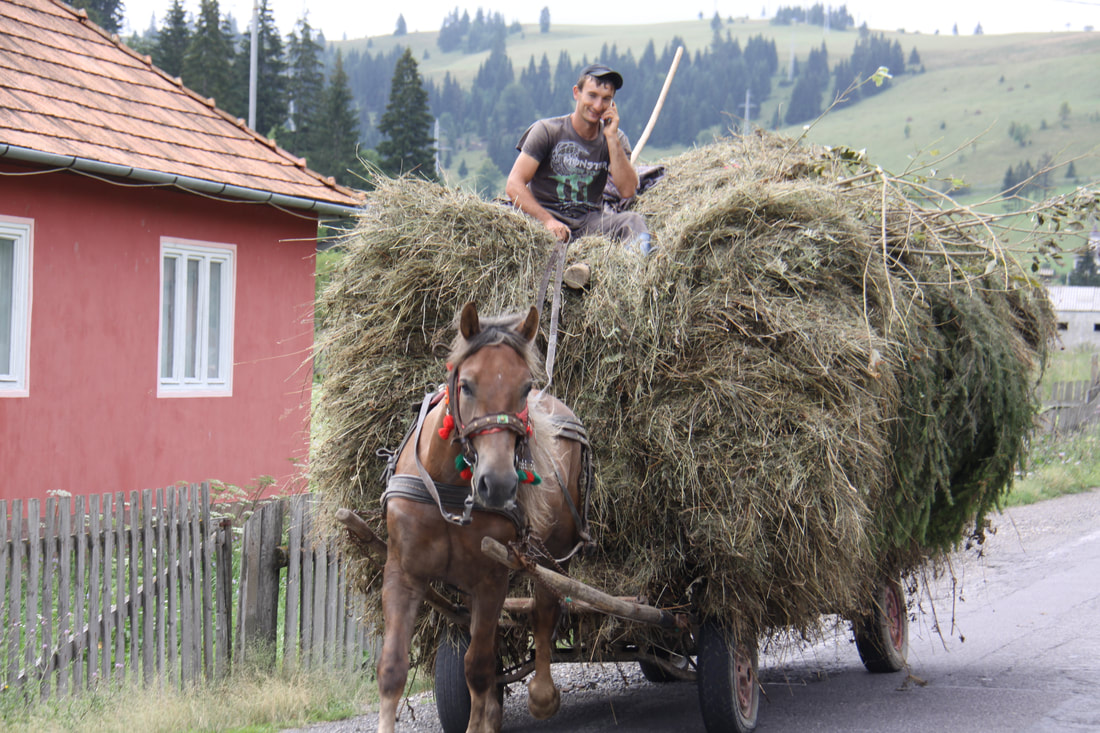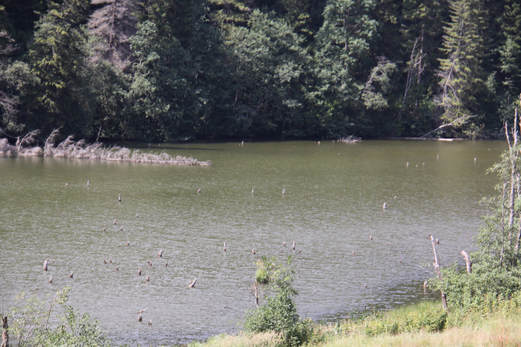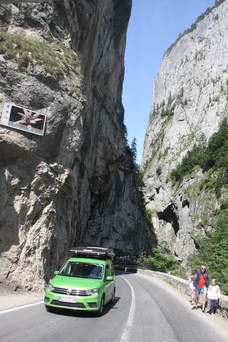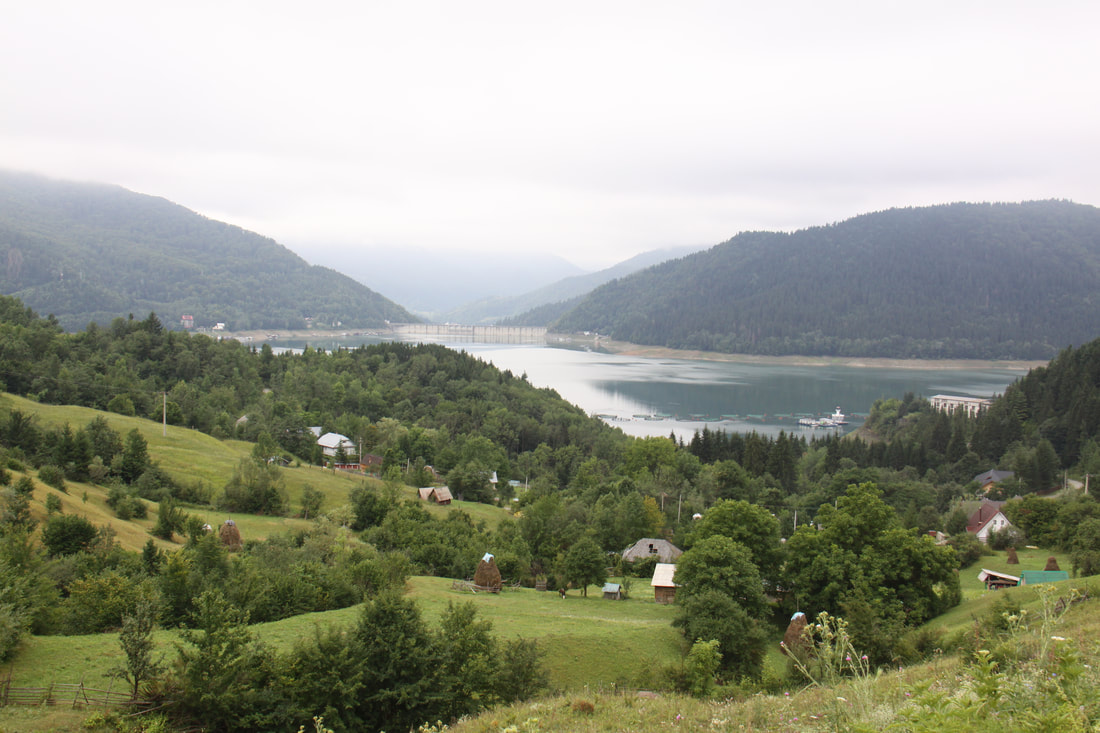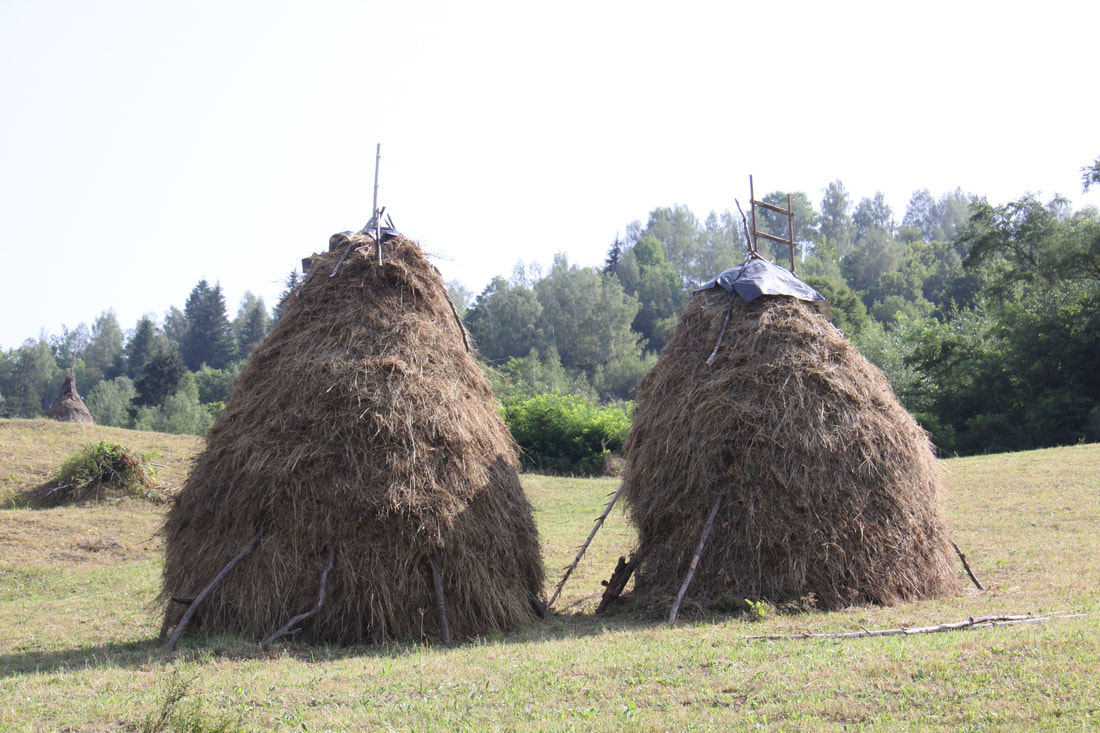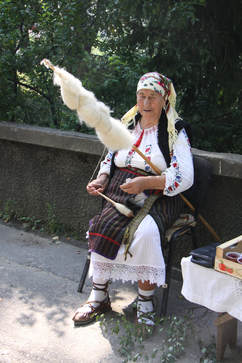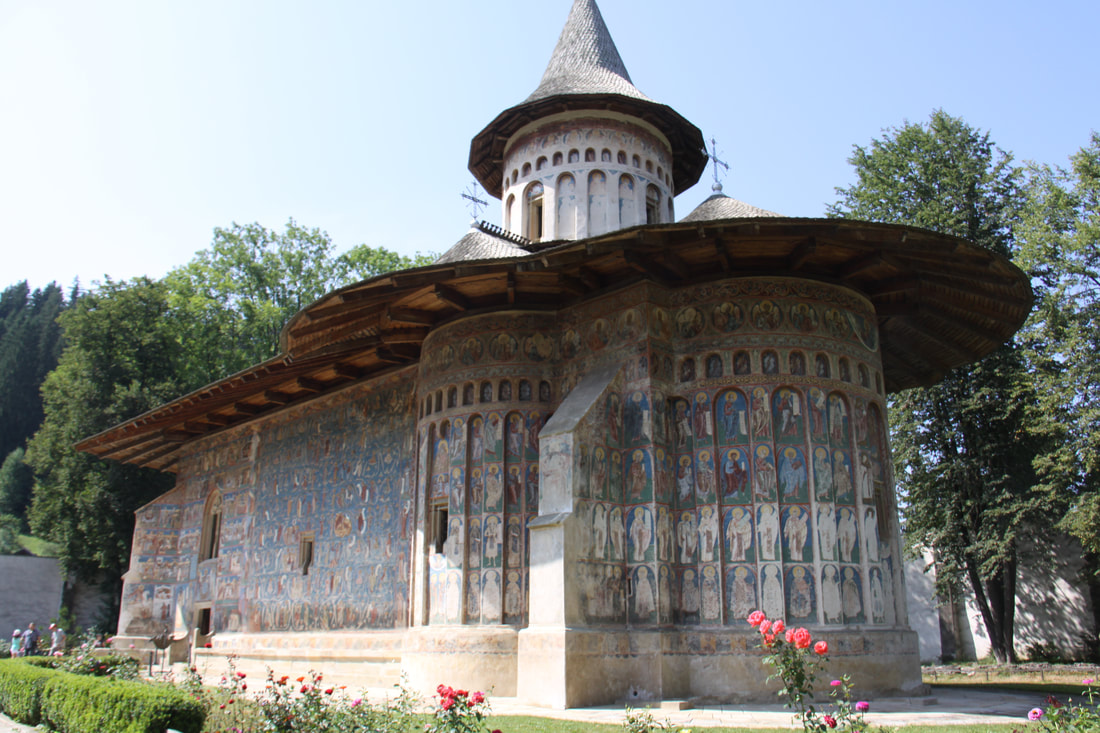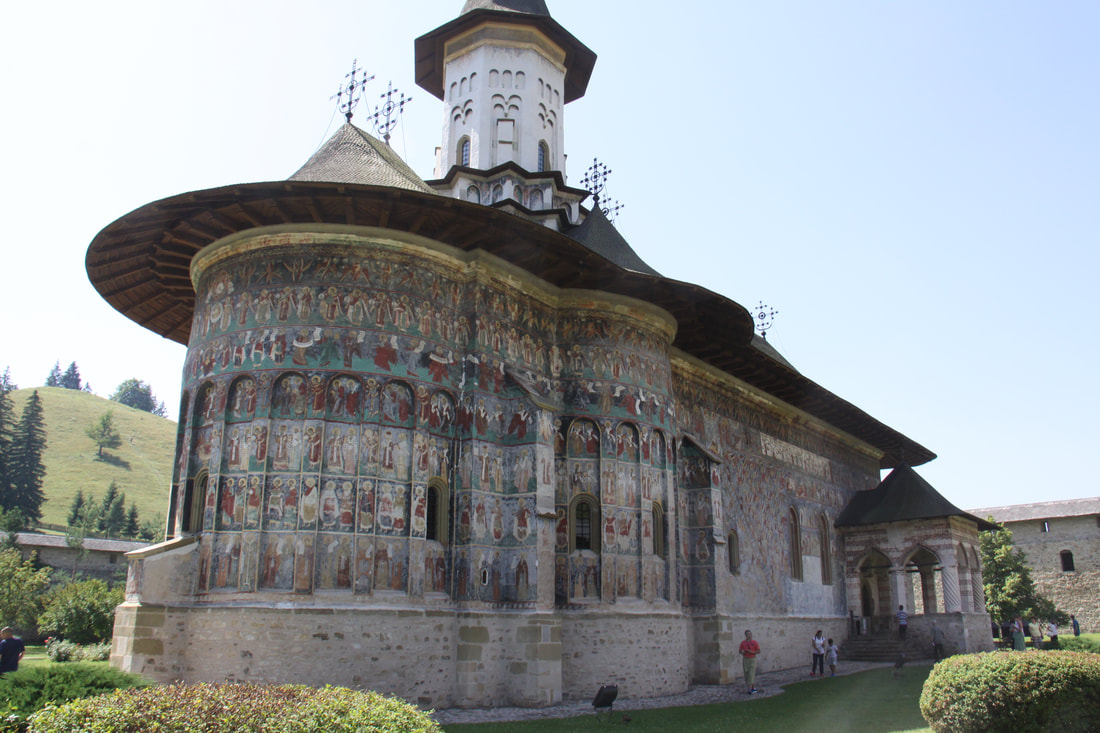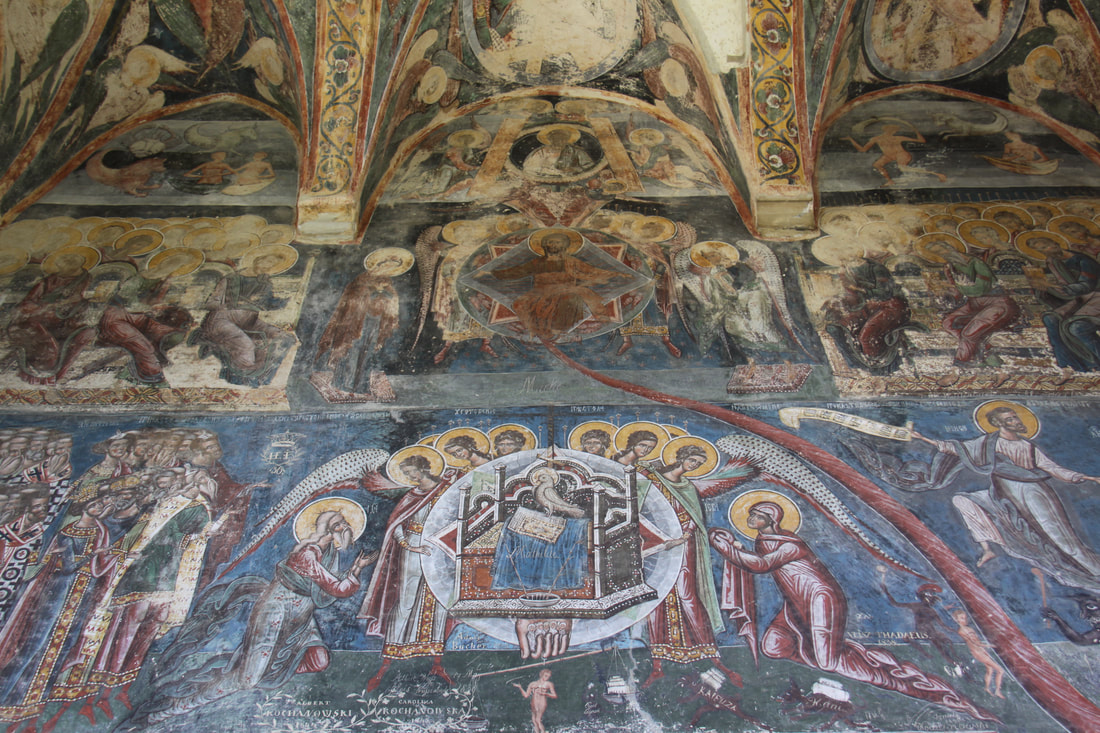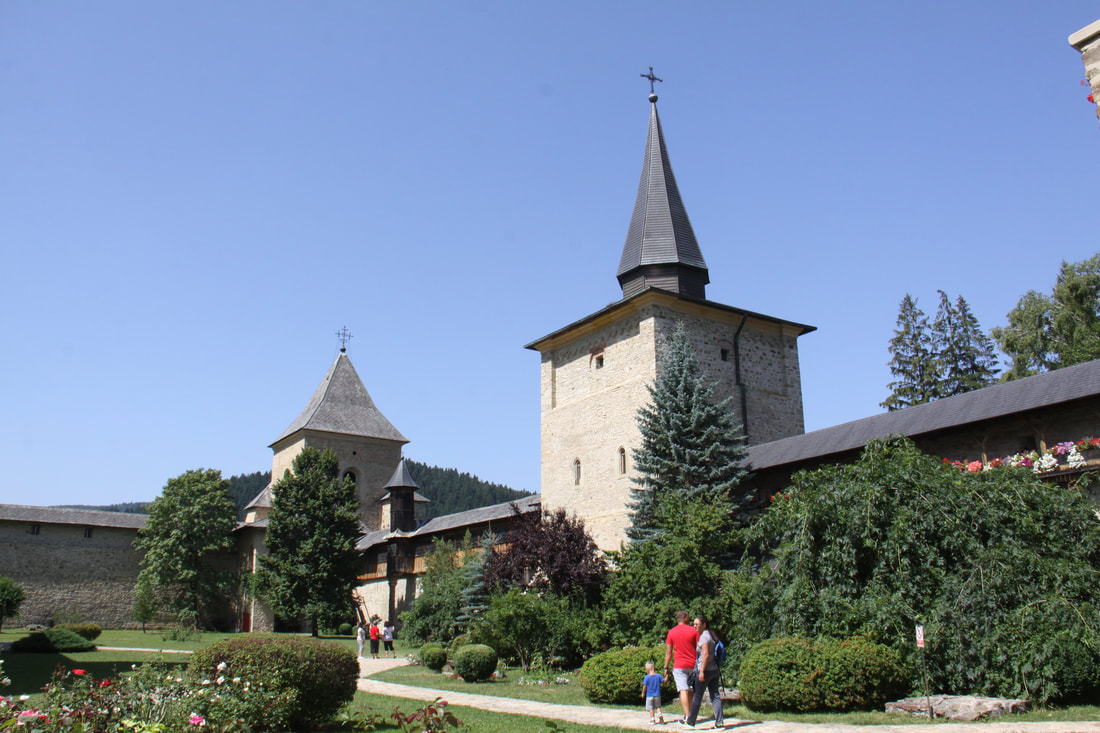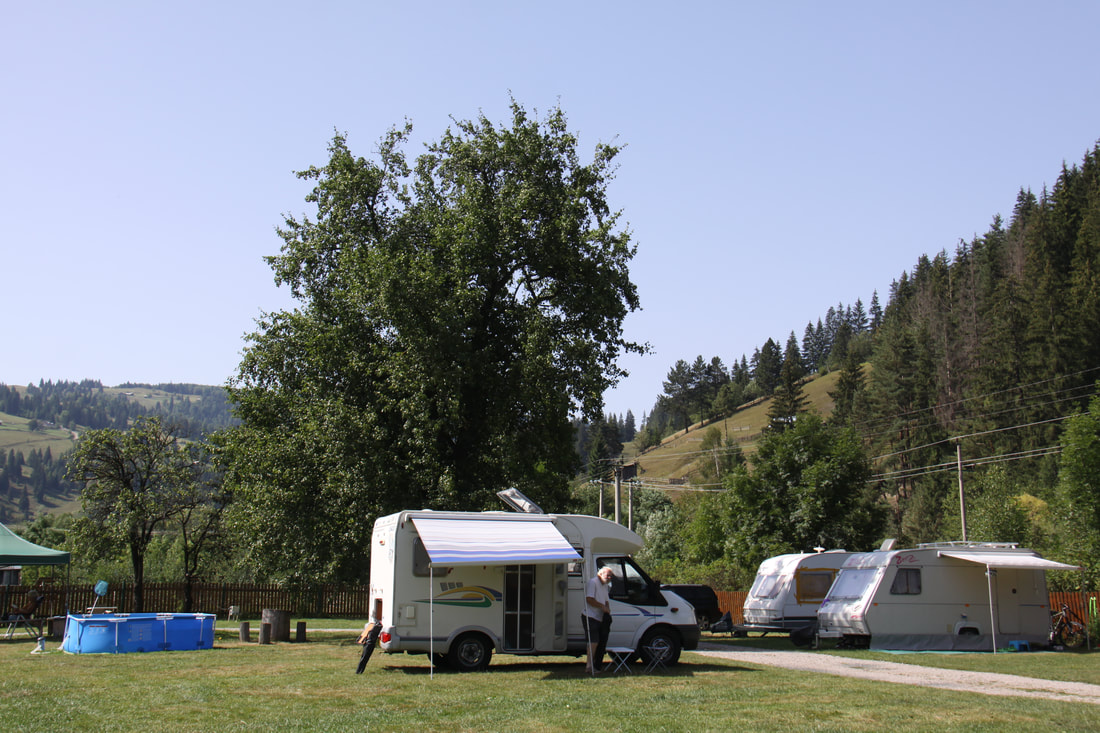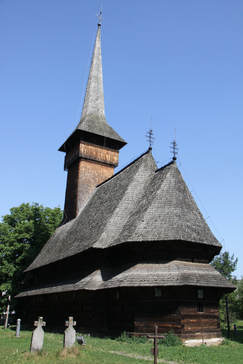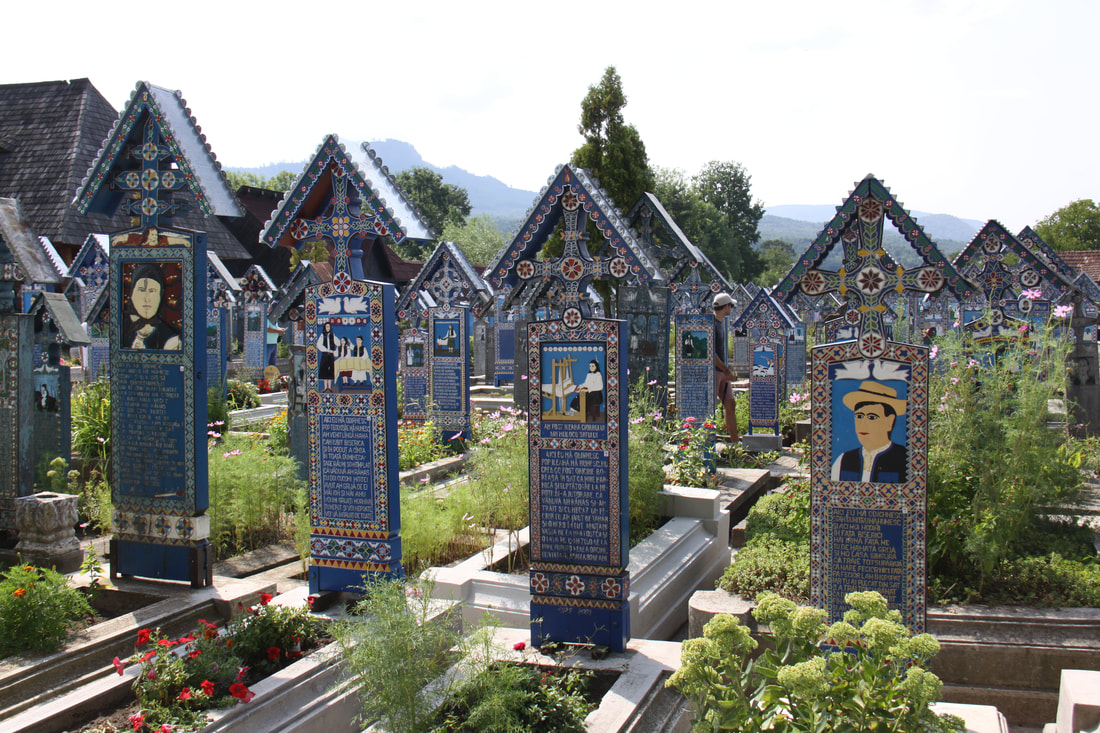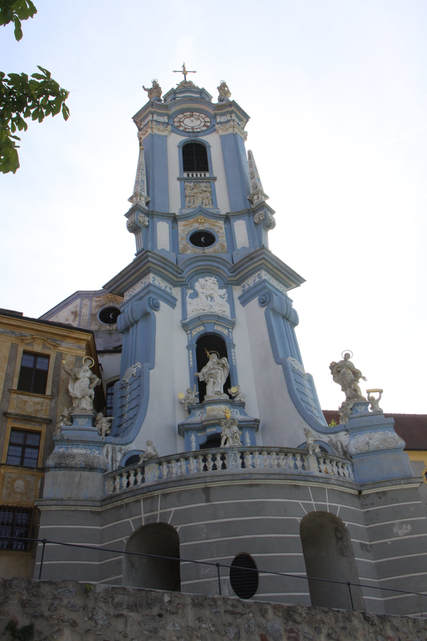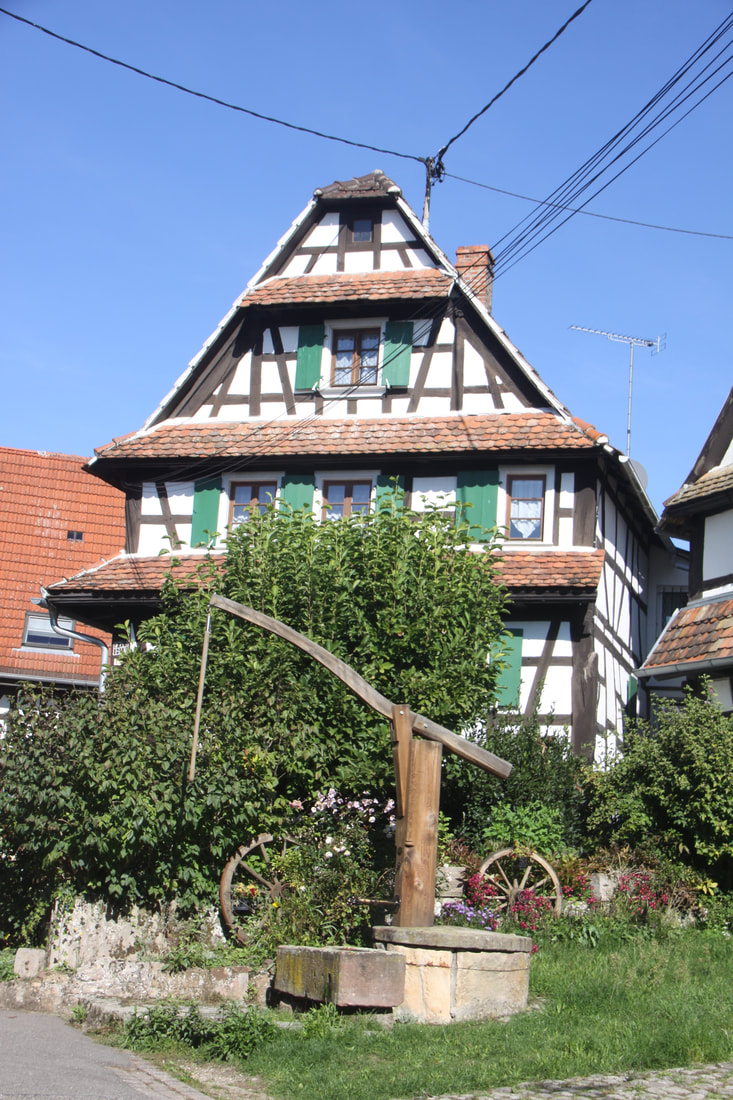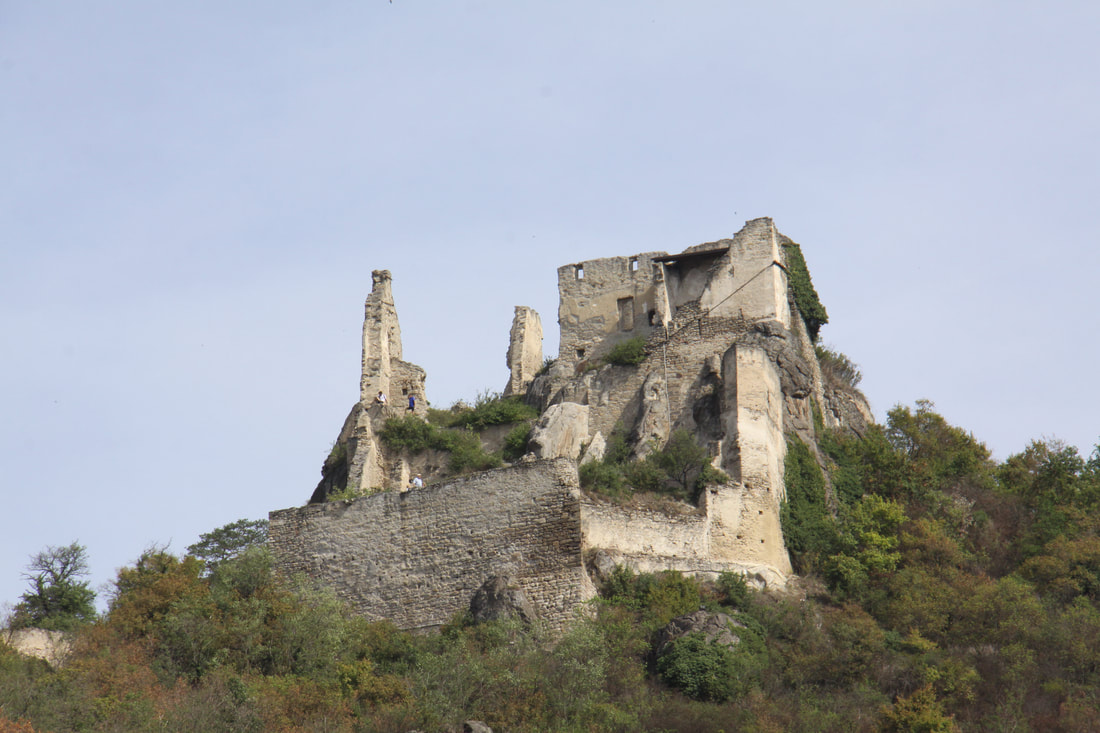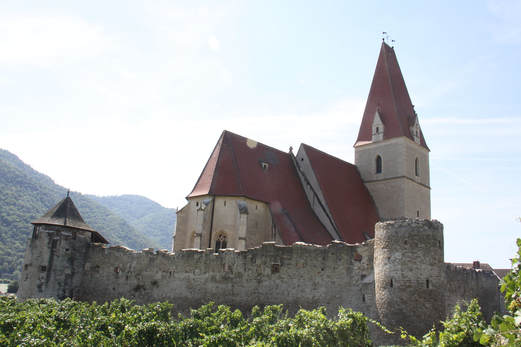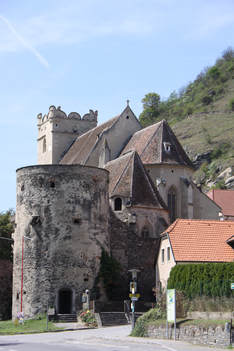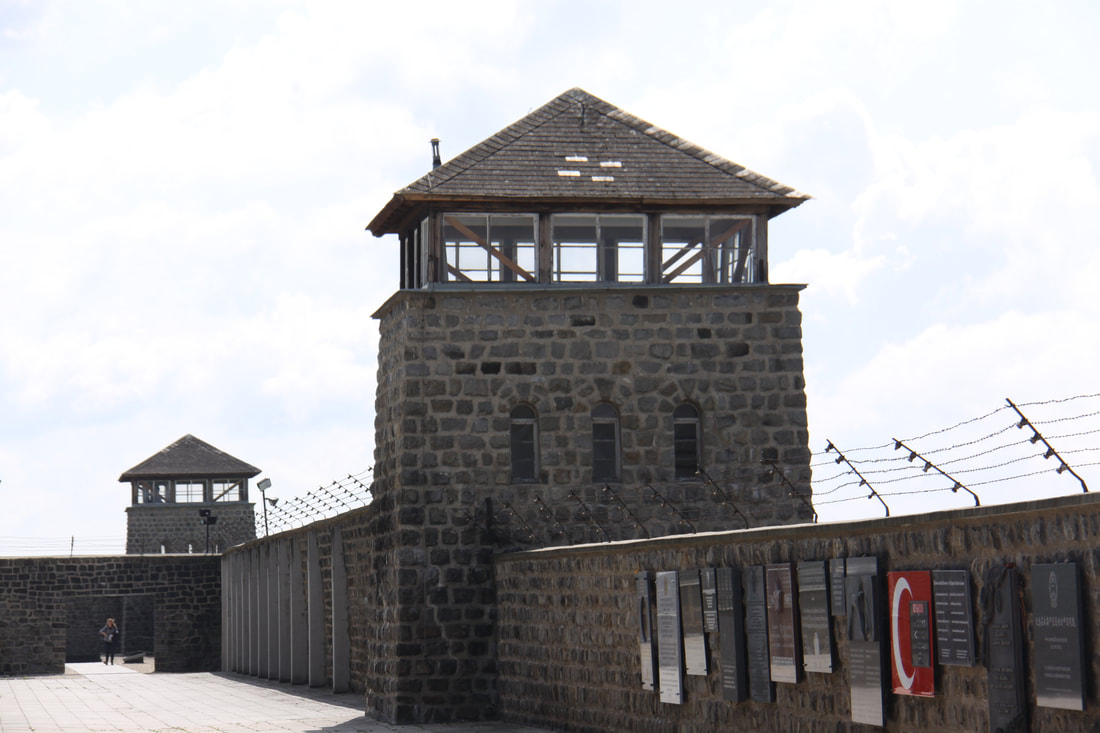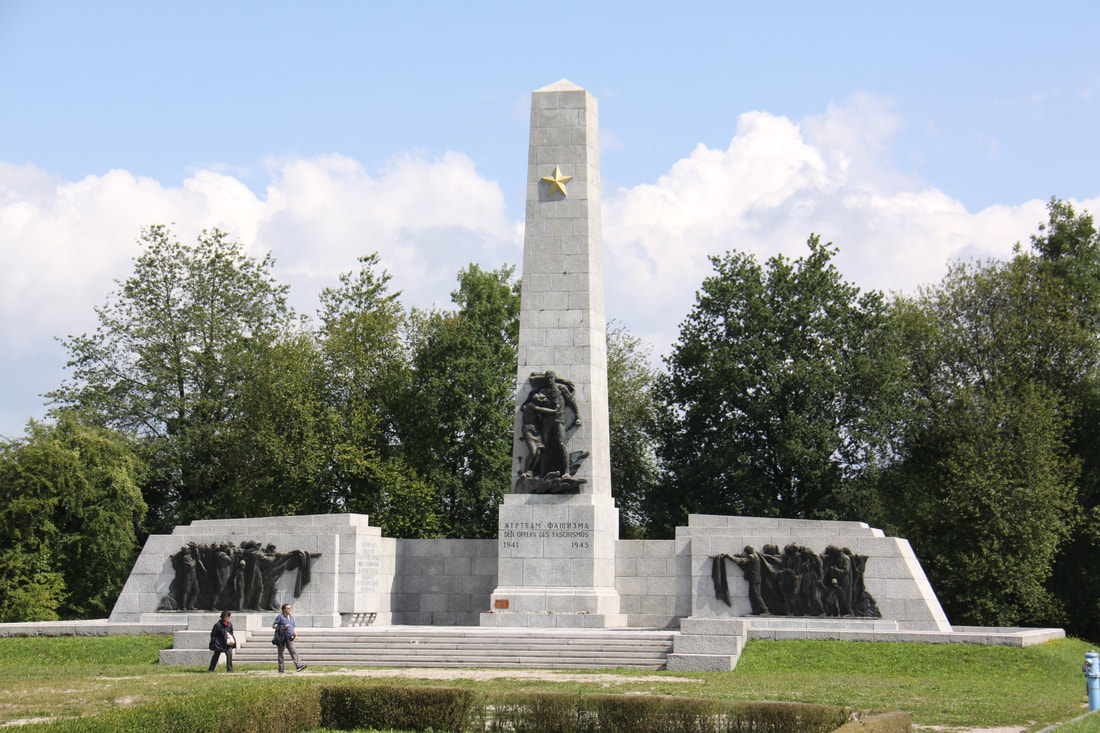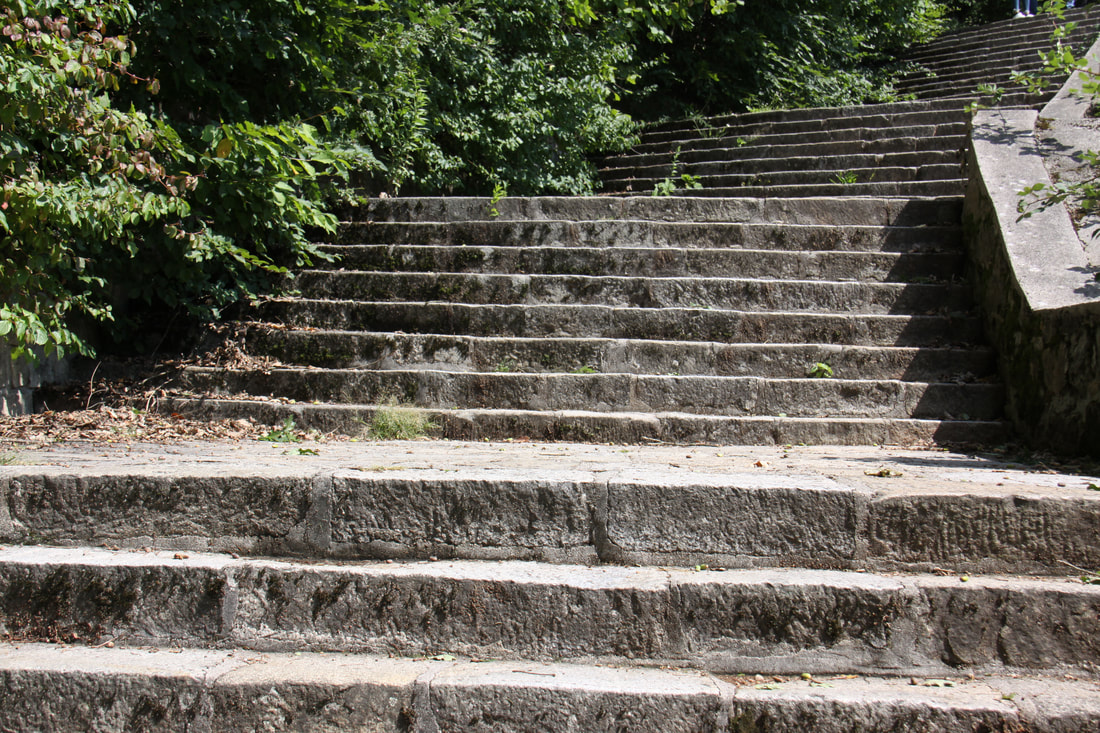Heading Back West
Sunday 6th August
After a very uncomfortably hot night we spent today heading north and towards the mountains where we hoped that it would be a little cooler.
We overnighted at Camperland Camping at Darnesti.
Monday 7th August
A rest day. Due to heavy rain and one of our alarms going off in the night we had a disturbed night's sleep.
Tuesday 8th August
To begin with we drove through the beautiful Trotus valley with its many traditional farming villages. Many of the people living here are of Hungarian origin, leading to a different style of architecture.
After a very uncomfortably hot night we spent today heading north and towards the mountains where we hoped that it would be a little cooler.
We overnighted at Camperland Camping at Darnesti.
Monday 7th August
A rest day. Due to heavy rain and one of our alarms going off in the night we had a disturbed night's sleep.
Tuesday 8th August
To begin with we drove through the beautiful Trotus valley with its many traditional farming villages. Many of the people living here are of Hungarian origin, leading to a different style of architecture.
At Gheorgheni we left the main road and headed towards Lacu Rosa and Bicaz. Lacu Rosa (Red Lake) was definitely not red! The lake was formed after a landslide blocked the river. The tops of trees were still evident in the lake. It was very much a tourist spot meaning that it was impossible for us to park.
Bicaz Gorge is very impressive with sheer limestone cliffs rising on either side of the Bicaz River. At one place the road has had to be hewn directly out of the rock. This "Neck of Hell" section, as it is known locally was very impressive although so narrow in places that it was difficult to pass vehicles heading in the opposite direction.
We spent the night in the car park of a motel on the shores of a lake, a far cry from the tranquility of the last two nights.
Wednesday 9th August
Today, for the first hour, we drove along the shore of Lake Bicaz. The views across the lake to the hills beyond were very beautiful.
Just after lunch we reached the beautifully painted monastery of Varonet. The monastery was founded in 1488 and the exterior paintings date from 1547 - 50. Along the western wall is a magnificent painting depicting "The Last Judgment".
We stayed the night on a small campground with a real rural feel i.e. it has seen better days. One toilet and one shower, there were about 50 of us there in various motorhomes, caravans and tents!
At least it was close to the more famous of the painted monasteries.
Thursday 10th August
We set off early. I insisted we had to turn right out of the campsite and didn't need the satnav. Thirty minutes later we got to the end of the road and had to turn back! John was not amused!
We visited a second of the painted monasteries- Sucevita. Surprisingly it was not too busy. The complex is one of the grandest and was built in 1584, then later enclosed by walls, towers and a belfry. The frescoes were painted in 1596. On the north wall of the monastery is the "Ladder of Virtue", while on the south wall is painted the "Tree of Jesse".
A scenic road cresting the Ciumarna pass, with outstanding views over the Obcinele Bucovinci Ridges, led us to the much smaller complex of Moldevita Monastery. This monastery was founded in 1532 and the frescoes painted some five years later. The "Siege of Constantinebli" and the "Tree of Jesse" are just two of the exterior frescoes.
Tonight was spent at Camping de Vuurplaat, Fundu Moldovie, the best site we have stayed at in Romania.
We set off early. I insisted we had to turn right out of the campsite and didn't need the satnav. Thirty minutes later we got to the end of the road and had to turn back! John was not amused!
We visited a second of the painted monasteries- Sucevita. Surprisingly it was not too busy. The complex is one of the grandest and was built in 1584, then later enclosed by walls, towers and a belfry. The frescoes were painted in 1596. On the north wall of the monastery is the "Ladder of Virtue", while on the south wall is painted the "Tree of Jesse".
A scenic road cresting the Ciumarna pass, with outstanding views over the Obcinele Bucovinci Ridges, led us to the much smaller complex of Moldevita Monastery. This monastery was founded in 1532 and the frescoes painted some five years later. The "Siege of Constantinebli" and the "Tree of Jesse" are just two of the exterior frescoes.
Tonight was spent at Camping de Vuurplaat, Fundu Moldovie, the best site we have stayed at in Romania.
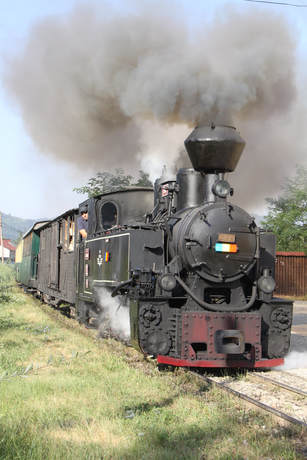
Friday 11th August
We headed back further west today. The journey took much longer as we had been warned by a number of people not to go over the Prislop Pass because the road was in a very poor condition. This was a shame as that route was very scenic, we had driven the route on a previous trip to Romania.
Parts of our amended route were scenic but there was heavy traffic for much of the way.
We stopped overnight on the car park of the logging train terminal at Viseu de Sus.
Saturday 12th August
Another scorching hot day with 40deg C shade temperatures.
Before breakfast we watched the first steam train set off along the logging line. Other trains left while we got ready to leave.
As we were in the Maramures district we saw a number of the lovely wooden churches for which the area is famous. We then stopped to view the large monastic complex at Barsana, built in 1993.
To complete our day of visiting religious sites we visited the "Merry Cemetery" at Sapanta. Here, most of the wooden gravestones are elaborately carved and painted with portraits of the deceased or scenes from their life.
We spent the night at Camping Poieni in Sapanta.
We headed back further west today. The journey took much longer as we had been warned by a number of people not to go over the Prislop Pass because the road was in a very poor condition. This was a shame as that route was very scenic, we had driven the route on a previous trip to Romania.
Parts of our amended route were scenic but there was heavy traffic for much of the way.
We stopped overnight on the car park of the logging train terminal at Viseu de Sus.
Saturday 12th August
Another scorching hot day with 40deg C shade temperatures.
Before breakfast we watched the first steam train set off along the logging line. Other trains left while we got ready to leave.
As we were in the Maramures district we saw a number of the lovely wooden churches for which the area is famous. We then stopped to view the large monastic complex at Barsana, built in 1993.
To complete our day of visiting religious sites we visited the "Merry Cemetery" at Sapanta. Here, most of the wooden gravestones are elaborately carved and painted with portraits of the deceased or scenes from their life.
We spent the night at Camping Poieni in Sapanta.
Sunday 13th August
Finally a cool refreshing day with a hint of moisture in the air. Twenty degrees cooler in fact and perfect as today was a driving day.
We left Romania with regret as it is a beautiful interesting country in many ways still steeped in tradition. The one thing we won't miss is the poor condition of the roads. New stretches of road and a few motorways are now in place, but potholes are still a major problem in many areas.
We entered Hungary, bought an expensive Vignette, a legal requirement for many of the roads, and headed to a lovely campsite in the grounds of the Hotel Okatura in Hortobagy.
Monday 14th August
The drive this morning was across the atmospheric Great Plains of Hungary which are criss-crossed with rivers and shallow lakes, a paradise for fishermen and wading birds. The landscape was dotted with hides and tall wooden towers for bird watching.
Later in the day we drove along part of the Danube Bend between Budapest and Eszbergom. It was along this stretch of the river that medieval Kings of Hungary had their majestic palaces. In Eszbergom is an impressive basilica, built on a hill above the town overlooking the Danube. It is the largest church in Hungary. Although a pretty drive, too much vegetation meant only a rare glimpse of the river.
We once again spent the night in the secure compound of CaraMore where there is a free, full facility aire.
Tuesday 15th August
We needed to spend time changing the bed, cleaning and washing. Our free aire at CaraMore had a kitchen, toilet and shower block with piping hot water so it seemed the ideal opportunity to spend a day getting sorted.
Wednesday 16th August
Today we retraced our steps back through Hungary. To begin with we drove through some pretty villages on the south bank of the Danube, but then headed back to the autobahn. Crossed over the border into Austria.
It was good to be back somewhere where we understood the language. But after three weeks in Romania, coming back to Western European prices was a bit of a shock!
"On the Banks of the Danube, we took a little walk.
We went into a Butcher's, and bought a slice of pork.
We had ourselves a barbecue and it was rather nice.
We like the food in Austria, but we do not like the price!"
We stayed at the quiet little motorhome stopover at Deutsch Jahrnsdorf.
Finally a cool refreshing day with a hint of moisture in the air. Twenty degrees cooler in fact and perfect as today was a driving day.
We left Romania with regret as it is a beautiful interesting country in many ways still steeped in tradition. The one thing we won't miss is the poor condition of the roads. New stretches of road and a few motorways are now in place, but potholes are still a major problem in many areas.
We entered Hungary, bought an expensive Vignette, a legal requirement for many of the roads, and headed to a lovely campsite in the grounds of the Hotel Okatura in Hortobagy.
Monday 14th August
The drive this morning was across the atmospheric Great Plains of Hungary which are criss-crossed with rivers and shallow lakes, a paradise for fishermen and wading birds. The landscape was dotted with hides and tall wooden towers for bird watching.
Later in the day we drove along part of the Danube Bend between Budapest and Eszbergom. It was along this stretch of the river that medieval Kings of Hungary had their majestic palaces. In Eszbergom is an impressive basilica, built on a hill above the town overlooking the Danube. It is the largest church in Hungary. Although a pretty drive, too much vegetation meant only a rare glimpse of the river.
We once again spent the night in the secure compound of CaraMore where there is a free, full facility aire.
Tuesday 15th August
We needed to spend time changing the bed, cleaning and washing. Our free aire at CaraMore had a kitchen, toilet and shower block with piping hot water so it seemed the ideal opportunity to spend a day getting sorted.
Wednesday 16th August
Today we retraced our steps back through Hungary. To begin with we drove through some pretty villages on the south bank of the Danube, but then headed back to the autobahn. Crossed over the border into Austria.
It was good to be back somewhere where we understood the language. But after three weeks in Romania, coming back to Western European prices was a bit of a shock!
"On the Banks of the Danube, we took a little walk.
We went into a Butcher's, and bought a slice of pork.
We had ourselves a barbecue and it was rather nice.
We like the food in Austria, but we do not like the price!"
We stayed at the quiet little motorhome stopover at Deutsch Jahrnsdorf.
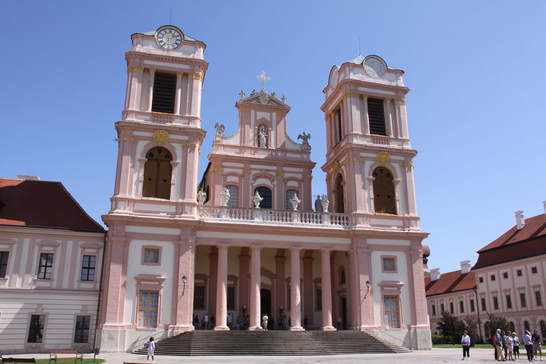
Thursday 17th August
We made an early start this morning with the intention of reaching Vienna for a full day of sightseeing. Unfortunately on reaching the motorhome parking, we were told that the site was fully booked throughout August! We realised that we should probably have stopped here on 24th July when we passed on our outward journey. John wanted to, but I was keen to push on further east.
Our plan for the day was altered. Vienna will have to wait for a future trip.
We headed a little further west to the Wachau, a World Heritage Site bordering the Danube between Krems and Ybbs. We stopped at Stift Gottweig and visited as much of the complex as was open to the public. The abbey is situated on the top of a hill and has wide ranging views to the Danube and the Wachau valley. The Benedictine monks have worshiped here for more than 900 years. The buildings seen today are Baroque and the Emperor's Staircase, with a ceiling fresco painted in 1739, is beautiful and impressive. The abbey church is magnificently decorated.
Nearby Krems, on the north bank of the Danube was founded in 1072 and still retains its cobbled centre and many buildings from the Baroque period.
Tonight was spent on a motorhome stopover next to a winery in the small village of Langenlois which is nestled amongst vineyards.
We made an early start this morning with the intention of reaching Vienna for a full day of sightseeing. Unfortunately on reaching the motorhome parking, we were told that the site was fully booked throughout August! We realised that we should probably have stopped here on 24th July when we passed on our outward journey. John wanted to, but I was keen to push on further east.
Our plan for the day was altered. Vienna will have to wait for a future trip.
We headed a little further west to the Wachau, a World Heritage Site bordering the Danube between Krems and Ybbs. We stopped at Stift Gottweig and visited as much of the complex as was open to the public. The abbey is situated on the top of a hill and has wide ranging views to the Danube and the Wachau valley. The Benedictine monks have worshiped here for more than 900 years. The buildings seen today are Baroque and the Emperor's Staircase, with a ceiling fresco painted in 1739, is beautiful and impressive. The abbey church is magnificently decorated.
Nearby Krems, on the north bank of the Danube was founded in 1072 and still retains its cobbled centre and many buildings from the Baroque period.
Tonight was spent on a motorhome stopover next to a winery in the small village of Langenlois which is nestled amongst vineyards.
Friday 18th August
Another hot day with cloudless skies. During the night the wind got up and it felt like a storm was brewing but nothing came of it. The temperature was already 30deg C when we got out of bed!
Today was spent in the Wachau exploring the villages along the northern bank of the Danube. Durnstein is an old town with many picturesque buildings of varying architectural styles. The monastery dates from 1410 but was extensively renovated in the Baroque style. Its blue and white tower dominates the village.
Rising above the town is the castle where Richard the Lionheart was imprisoned for a year before, according to legend, he was freed upon payment of a ransom by his faithful minstrel Blondel. A trail leads up to the castle along which marker boards tell the story. Unfortunately it was far too hot to climb up to the castle as there was no shade.
Another hot day with cloudless skies. During the night the wind got up and it felt like a storm was brewing but nothing came of it. The temperature was already 30deg C when we got out of bed!
Today was spent in the Wachau exploring the villages along the northern bank of the Danube. Durnstein is an old town with many picturesque buildings of varying architectural styles. The monastery dates from 1410 but was extensively renovated in the Baroque style. Its blue and white tower dominates the village.
Rising above the town is the castle where Richard the Lionheart was imprisoned for a year before, according to legend, he was freed upon payment of a ransom by his faithful minstrel Blondel. A trail leads up to the castle along which marker boards tell the story. Unfortunately it was far too hot to climb up to the castle as there was no shade.
The next village was Weissenkirchen with its imposing fortified church which towers over the vintner's houses in the village. It was originally constructed in the 13th century on the site of a chapel dating from the 11th century. An impressive covered stone staircase leads up to the actual church.
Finally, St. Michaels, with its interesting church, again fortified, ends this very interesting section of road.
We stopped for the night at Ardagger Markt.
Finally, St. Michaels, with its interesting church, again fortified, ends this very interesting section of road.
We stopped for the night at Ardagger Markt.
Saturday 19th August
We awoke again in the night with the skylight rattling in the wind. Soon after the van was shaking dramatically as the wind battered us. The rain came soon after.
We woke in the morning to heavy rain and temperatures 20 degrees cooler. Such a relief.
We decided to stay put and have a rest day, catching up with emails and updating the blog.
Sunday 20th August
A short drive this morning brought us to Mauthausen, one of the infamous concentration camps of the Third Reich. Today the former camp, much of which has been preserved, is set up as a memorial to the thousands who lost their lives there between 1938 and May 5th 1945 when the camp was liberated. The prisoners of Mauthausen were forced to work in the nearby granite quarry and of these prisoners many died on the "Stairs of Death" while carrying heavy granite blocks up to the camp. Mauthausen today is a sobering memorial to those inmates.
After leaving Mauthausen we drove south towards Liezen, our destination for the night. Much of the motorway consisted of tunnels and there were stunning views of the Alps. Liezen itself sits in a beautiful glacial valley surrounded by high mountains.
We awoke again in the night with the skylight rattling in the wind. Soon after the van was shaking dramatically as the wind battered us. The rain came soon after.
We woke in the morning to heavy rain and temperatures 20 degrees cooler. Such a relief.
We decided to stay put and have a rest day, catching up with emails and updating the blog.
Sunday 20th August
A short drive this morning brought us to Mauthausen, one of the infamous concentration camps of the Third Reich. Today the former camp, much of which has been preserved, is set up as a memorial to the thousands who lost their lives there between 1938 and May 5th 1945 when the camp was liberated. The prisoners of Mauthausen were forced to work in the nearby granite quarry and of these prisoners many died on the "Stairs of Death" while carrying heavy granite blocks up to the camp. Mauthausen today is a sobering memorial to those inmates.
After leaving Mauthausen we drove south towards Liezen, our destination for the night. Much of the motorway consisted of tunnels and there were stunning views of the Alps. Liezen itself sits in a beautiful glacial valley surrounded by high mountains.
Monday 21st August
We had a prompt start this morning, only to be held up almost immediately at roadworks for over an hour! Very frustrating. Once clear of the traffic jam it was a beautiful drive through Ennstal, a lush valley linking Liezen to Radstadt which is surrounded by the high peaks of the Dachstein and Nieder Tauern Alps.
As we approached Salzburg it was obvious that our traffic frustration was not over for the day. The sheer volume of traffic and the convergence of two autobahns led to total gridlock which we took nearly another hour to clear.
It was with a sigh of relief and a note to ourselves not to travel in this part of the world in high summer, that we reached Neubueren, our stop for the night.
[click] to continue our trip along the Romantische Straße
[click] to return to Home page
Monday 21st August
We had a prompt start this morning, only to be held up almost immediately at roadworks for over an hour! Very frustrating. Once clear of the traffic jam it was a beautiful drive through Ennstal, a lush valley linking Liezen to Radstadt which is surrounded by the high peaks of the Dachstein and Nieder Tauern Alps.
As we approached Salzburg it was obvious that our traffic frustration was not over for the day. The sheer volume of traffic and the convergence of two autobahns led to total gridlock which we took nearly another hour to clear.
It was with a sigh of relief and a note to ourselves not to travel in this part of the world in high summer, that we reached Neubueren, our stop for the night.
[click] to continue our trip along the Romantische Straße
[click] to return to Home page
